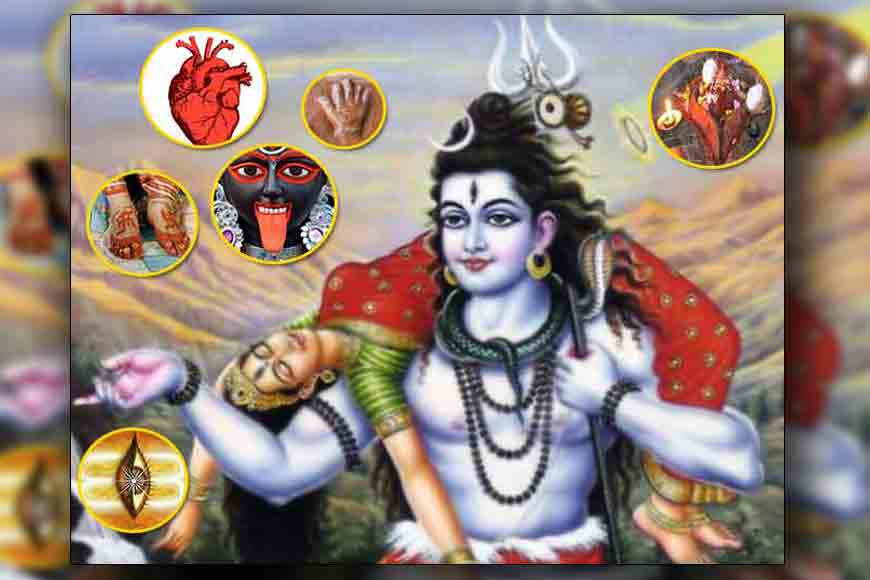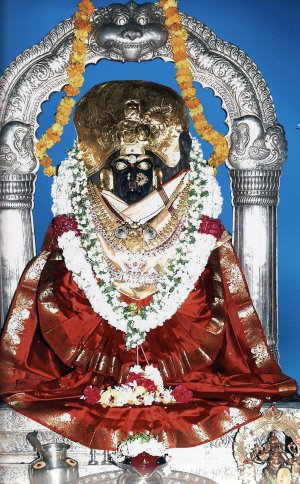Table of Contents
Introduction
In the vast tapestry of Hindu mythology and spirituality, there are numerous sacred sites that hold immense significance for devotees. Among these revered places, Shakti Peeths stand out as powerful centers of devotion and worship. Shakti Peeths are believed to be the spots where body parts or ornaments of the Goddess Sati, an incarnation of the Divine Feminine, fell when Lord Shiva carried her remains and performed the celestial dance of Tandava. Let’s explore the mystical world of Shakti Peeths and their importance in Hindu culture.
Origins and Legend

According to ancient Hindu scriptures, the story of Shakti Peeths revolves around the divine union of Lord Shiva and Goddess Sati. When Sati’s father insulted Shiva, she sacrificed herself in the fire of a yajna (sacred fire ritual). Grief-stricken, Shiva performed the Tandava dance, and various parts of Sati’s body fell to earth. These locations became revered as Shakti Peeths, symbolizing the power and energy of the Goddess.
Sacred Locations
There are 51 recognized Shakti Peeths scattered across the Indian subcontinent, each associated with a specific body part or ornament of Goddess Sati. These include Kamakhya Devi in Assam, Kalighat Kali Temple in West Bengal, Vaishno Devi in Jammu and Kashmir, and Kanyakumari in Tamil Nadu, to name just a few. Each Peeth holds its own unique spiritual energy and significance, attracting millions of devotees annually.
Significance and Devotion

Image Courtesy: www.vedicgyaan.com
Shakti Peeths are considered highly sacred, and pilgrimage to these sites is believed to bring divine blessings and fulfillment of desires. Devotees believe that the energy of the Goddess is particularly potent at these locations, offering spiritual healing, protection, and guidance. People from all walks of life, irrespective of gender or caste, visit Shakti Peeths to seek the blessings of the Divine Mother and experience a deep connection with the cosmic feminine power.
Rituals and Celebrations

Shakti Peeths are vibrant centers of worship and festivity. Devotees engage in various rituals, including offering prayers, performing aarti (ritualistic worship with lamps), and participating in sacred ceremonies. Festivals such as Navaratri, dedicated to the worship of the Goddess, witness grand celebrations at Shakti Peeths. These vibrant events are filled with devotional singing, dancing, and elaborate processions, creating an atmosphere of spiritual fervor and joy.
Spiritual Empowerment
Visiting a Shakti Peeth is not merely a physical journey; it is a soulful pilgrimage that can have a profound impact on one’s spiritual growth. The divine energy and grace believed to be present at these sacred sites can awaken dormant spiritual faculties, inspire inner transformation, and foster a deep connection with the divine feminine principle within oneself.
Faqs On “Shakti Peeth”
Q1: What are Shakti Peeths?
A: Shakti Peeths are revered sites in Hinduism that are believed to be the places where body parts or ornaments of the Goddess Sati, an incarnation of the Divine Feminine, fell when Lord Shiva performed the celestial dance of Tandava carrying her remains.
Q2: How many Shakti Peeths are there?
A: There are 51 recognized Shakti Peeths scattered across the Indian subcontinent. Each Peeth is associated with a specific body part or ornament of Goddess Sati.
Q3: What is the significance of visiting a Shakti Peeth?
A: Visiting a Shakti Peeth is considered highly auspicious and is believed to bring divine blessings, spiritual healing, and fulfillment of desires. It offers devotees an opportunity to connect with the cosmic feminine power and seek the grace of the Divine Mother.
Q4: Can men visit Shakti Peeths?
A: Yes, Shakti Peeths are open to all devotees, regardless of gender. Men, women, and people from all walks of life can visit these sacred sites and seek the blessings of the Goddess.
Q5: Are there any rituals associated with Shakti Peeth visits?
A: Yes, there are various rituals associated with visiting Shakti Peeths. Devotees often offer prayers, perform aarti, and participate in sacred ceremonies. Many also engage in fasting and take a dip in nearby holy rivers or ponds as part of their pilgrimage.
Q6: Are there specific festivals celebrated at Shakti Peeths?
A: Yes, festivals dedicated to the worship of the Goddess, such as Navaratri, witness grand celebrations at Shakti Peeths. These festivals involve devotional singing, dancing, elaborate processions, and cultural performances.
Q7: Can one receive spiritual empowerment from visiting a Shakti Peeth?
A: Yes, visiting a Shakti Peeth is believed to have a profound impact on one’s spiritual growth. The powerful energy and grace associated with these sacred sites can awaken spiritual faculties, inspire inner transformation, and deepen one’s connection with the divine feminine principle.
Q8: Are all Shakti Peeths equally popular?
A: While all Shakti Peeths hold significant importance, some are more renowned and attract a larger number of devotees. Popular Shakti Peeths include Kamakhya Devi, Kalighat Kali Temple, Vaishno Devi, and Chhinnamasta Temple, among others.
Q9: Can one worship the Goddess at home instead of visiting Shakti Peeths?
A: Yes, it is possible to worship the Goddess in the comfort of one’s home. Many devotees have personal altars or spaces dedicated to the Divine Mother and engage in regular prayers, rituals, and chanting to connect with her divine energy.
Q10: How can one prepare for a visit to a Shakti Peeth?
A: Prior to visiting a Shakti Peeth, it is advisable to research the specific customs and traditions associated with that particular site. It is also recommended to carry necessary offerings, dress modestly, and maintain an attitude of reverence and devotion during the visit.
Conclusion
Shakti Peeths hold a significant place in Hindu spirituality, embodying the power and grace of the Divine Mother. These sacred sites offer a space for devotees to connect with the divine feminine energy and seek blessings for their spiritual well-being and worldly pursuits. The rich mythology, rituals, and devotional fervor surrounding Shakti Peeths make them vibrant centers of faith and cultural heritage. By visiting these hallowed grounds, devotees embark on a journey of self-discovery, finding solace, strength, and a profound connection with the eternal source of feminine power, the Shakti.
References
- Vanamali (2008). Shakti: Realm of the Divine Mother. Inner Traditions. pp. 83–84, 143–144. ISBN 978-1-59477-785-1. Archived from the original on 2016-04-29. Retrieved 2016-10-23.
- ^ Jump up to:a b Kunal Chakrabarti; Shubhra Chakrabarti (2013). Historical Dictionary of the Bengalis. Scarecrow. p. 430. ISBN 978-0-8108-8024-5. Archived from the original on 2017-02-15. Retrieved 2016-10-23.
- ^ “Everything you wanted to know about visiting Vaishno Devi”. India Times. 5 April 2019. Archived from the original on 13 April 2022. Retrieved 30 June 2022.
- ^ “Mata Hinglaj Yatra: To Hingol, a pilgrimage to reincarnation”. tribune.com.pk. 19 April 2016. Archived from the original on 20 March 2022. Retrieved 15 November 2019.
- ^ Newspaper, Bhutan’s Daily. “Significance of Bhairab Kunda Temple in Bhutan”. Kuensel Online. Retrieved 2023-04-02.
- ^ Shakti Peetha Stotram Archived 2011-12-11 at the Wayback Machine Vedanta Spiritual Library
